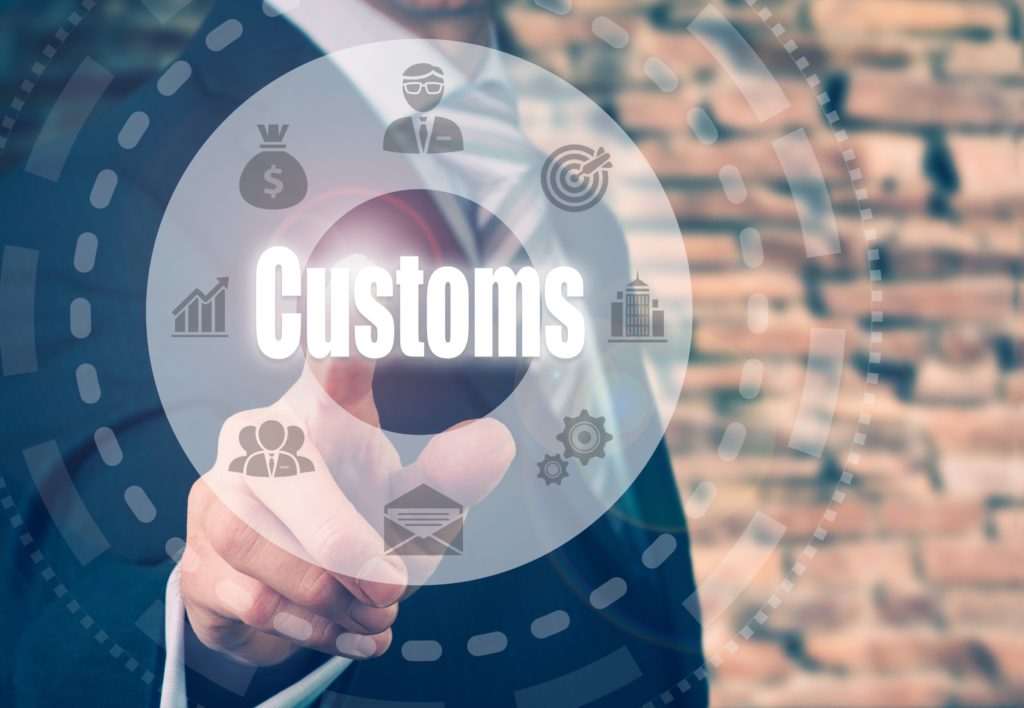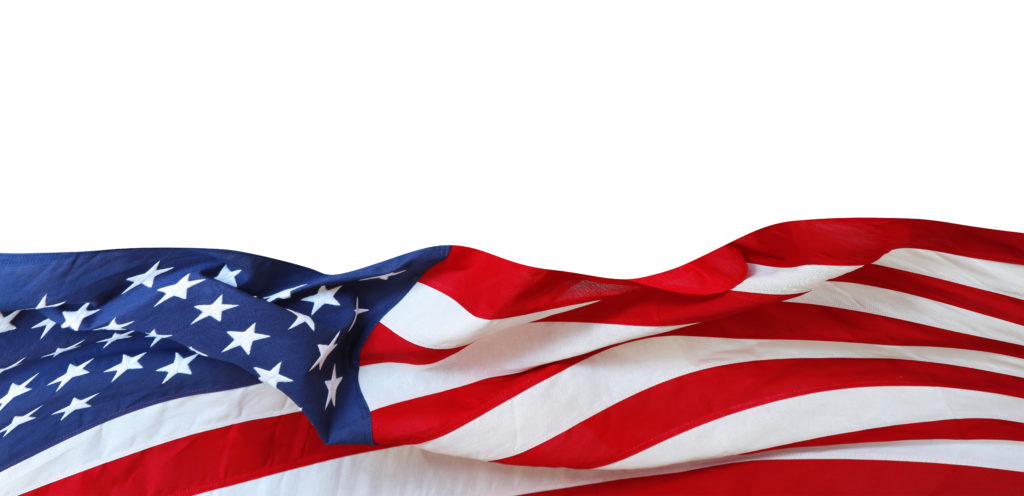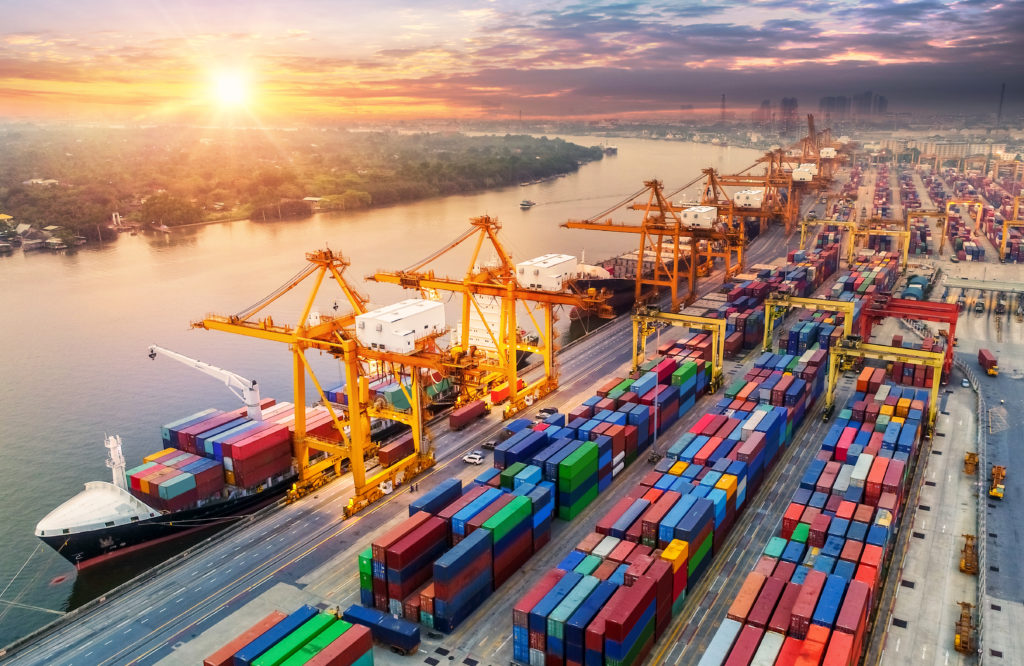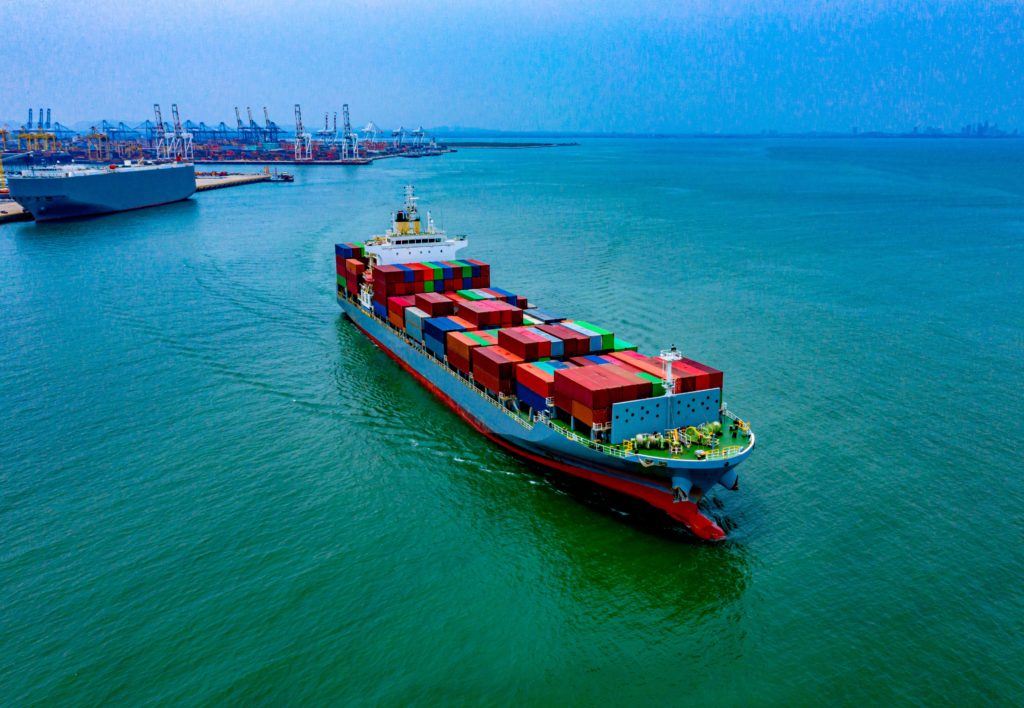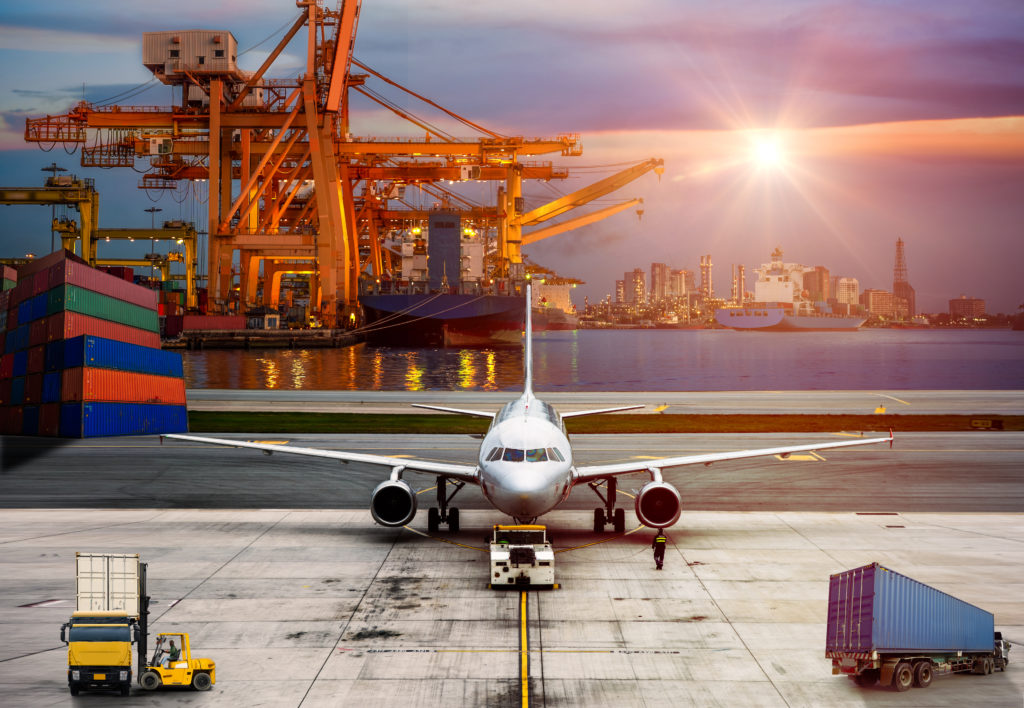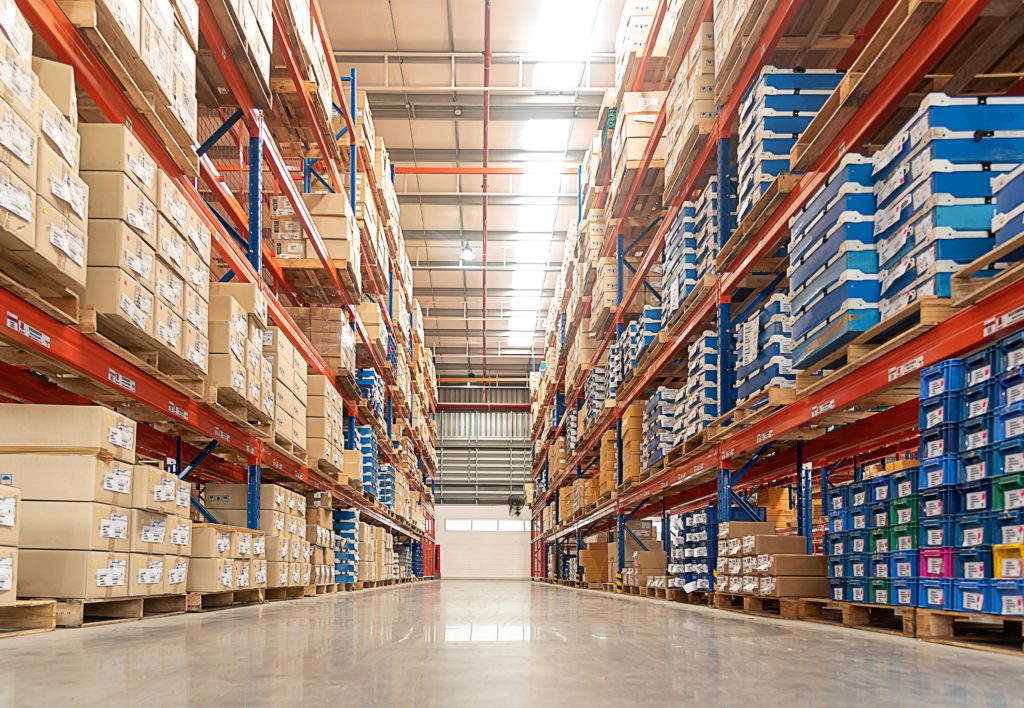Customs Bond
Customs Bond
What is Customs Bond?
- When goods are imported into the United States for commercial purposes and the value of the goods is over $2,500, a customs bond has to be posted by importers as well as by international carriers who transport or carry imported goods through the U.S.
- Operators of warehouses and facilities that hold, store, manipulate or manufacture the imported goods are often required to obtain a customs bond.
- Customs bond is a contractual agreement between the U.S. Customs and Border Protection (CBP), the issuing surety company and the importer (the principal). By obtaining a bond, the importer of record agrees to comply with the import rules and regulations of the U.S. government and pay applicable duties/taxes.
The importer can purchase a customs bond through a licensed customs broker from a surety company approved by the U.S. Department of the Treasury. To set up your Customs bond with your customs broker, you will need to complete a Power of Attorney (POA) and bond application.
To complete a POA and bond application, the importer is required to provide U.S. Tax ID (social security number (SSN) as an individual or an employer identification number (EIN) as a company). A foreign importer of record who does not have SSN or EIN can apply for a Customs Assigned Importer Number (CAIN) by filing CBP Form 5106. The foreign importer of record with a CAIN will need to name a U.S. business to act as the ultimate consignee who is receiving the goods at the final destination.
The Ultimate Consignee (the final recipient of the shipment) is defined as the party in the United States, to whom the overseas shipper sold the imported merchandise. If at the time of entry or release the imported merchandise has not been sold, then the Ultimate Consignee at the time of entry or release is defined as the party in the United States to whom the overseas shipper consigned the imported merchandise. If the merchandise has not been sold or consigned to a U.S. party at the time of entry or release, then the Ultimate Consignee at the time of entry or release is defined as the proprietor of the U.S. premises to which the merchandise is to be delivered.
In-Depth Coverage: Country of Origin
- Country of Origin of Imported Merchandise
- Customs Ruling: Country of Origin
- Country of Origin: Food Products
- Country of Origin: Chemical and Pharmaceutical Products
- Country of Origin & Country of Manufacture: CBP vs. FDA
- Country of Origin: Substantial Transformation or Country of Assembly Test
- Country of Origin and Free Trade Agreement
- Country of Origin and Section 301
Types of Customs Bond
Single Entry Bond
For a single shipment, an importer can purchase a single entry bond to cover one time entry of goods (for a consumption entry, immediate delivery, to cover articles entered or withdrawn from a warehouse, etc.). A single entry bond is valid only for the entry or transaction for which it is issued and it is filed at the specific port where the entry will be made. Generally, a single entry bond should be worth at minimum the value of the goods imported, plus any applicable duties, fees and taxes.
If the imported merchandise is subject to government agency rules and regulations as the following cases (1) and (2), the bond amount must be at least equal to three times the total entered value of the merchandise.
(1) The imported goods are subject to other agency requirements and the failure to redeliver of the released goods could pose a threat to the public health and safety, including the goods regulated by:
A) Food and Drug Administration (FDA) – All
B) Environmental Protection Agency (EPA) – All
C) Bureau of Alcohol, Tobacco and Firearms (BATF) – Alcoholic Beverages and Distilled Spirits Only
D) Consumer Products Safety Commission (CPSC) – Toys and Fireworks only if sampled by Customs for CPSC testing
E) Department of Agriculture, Agricultural Marketing Service (AMS) – Subject to marketing orders
F) Federal Communications Commission (FCC) – All
G) Toxic Substances Control Act (TOSCA) – All
(2) All merchandise subject to quota and/or visa requirements are also covered by this exceptional three-time rule.
In cases in which the entry includes merchandise which falls into the above categories, and merchandise which does not, the district director may set the bond amount equal to three times the total entered value of the merchandise which falls into the specified categories, plus the total entered value and all duties, taxes, and fees which apply, for the remainder of the merchandise.
In addition, the district director may set the single transaction bond amount at 10 percent of the total entered value for unconditionally free merchandise, which is not subject to the above categories.
In-Depth Coverage: Marketing and Advertising Compliance
- Federal Trade Commission (FTC) Advertising Rules
- Made in USA Standard
- FTC Regulation on Environmental Claims
- Adverting and Marketing on the Internet
- Label Claims for Conventional Foods and Dietary Supplements
- Dietary Supplement Advertising: What is FTC's Truth-in-Advertising Law?
- USDA Country of Origin Labeling (COOL)
- FTC Rules & Regulations on Food Advertisement
Continuous Bond
Continuous bond covers the import of goods for a year and is automatically renewed each year. The bond is valid until it is terminated by one of the 3 parties on the bond; the surety, the principal, or CBP. Continuous bond can be used at any port of entry and also can be used when you file the Importer Security Filing (ISF) for your shipment by vessel. A continuous bond must be at least 10% of duties, taxes, and fees paid for the previous 12 month period at a minimum of $50k. A $50K bond amount is sufficient to cover up to $500K in duties, taxes, and fees.
It is important to use the proper types of customs bonds, post the proper bond amount to cover all the goods imported, and make sure the bond amount is sufficient and increase as needed to avoid any bond claims.
There are many types of bonds required by CBP for various purposes.
Activity Code 1 – Import Bond
Activity Code 1a – Drawback Payment Refunds Bond
Activity Code 2 – Custodian of Bonded Merchandise Bond
Activity Code 3 – International Carrier Bond
Activity Code 3a – Instruments of International Traffic
Activity Code 4 – Foreign Trade Zone Bond
Activity Code 11 – Airport Security Bond
Activity Code 14 – In‐Bond Export Consolidation Bond]
Activity Code 16 – Importer Security Filing Bond
CBP requires that all importers have an import bond in order to clear imported goods through Customs. Depending on the import frequency, an importer may file a “Single Entry” import bond or a “Continuous” import bond.
In-Depth Coverage: USDA-Regulated Products
- Importing USDA-Regulated Food Products
- Import Regulation by USDA Agricultural Marketing Service (AMS)
- Food Products – FDA or USDA Regulated
- Country of Origin Labeling
- Importing Animals, Animal Products, and Biologics into the US
- Importing Meat, Poultry, and Egg Products into the US
- Labeling and Marking of Imported Meat, Poultry, and Egg Products
- USDA National Organic Program (NOP)
- Agricultural Safeguards and USDA Licensing
Activity Code 2 – Custodian Bond
The Activity Code 2 Custodian Bond covers the custodial activities of bonded warehouses proprietors, carriers, cartmen, lightermen, central examination stations, and container stations operators. All of these entities and personnel are responsible in the course of their activities for the commodities that they carry or hold and that have not been formally “entered” into the commerce of the United States and still have duties due. This merchandise is commonly referred to being “in-bond.”
The bond amount varies and is set by the District Director of Customs. It also varies by port. The minimum bond amount for the Activity Code 2 Custodian Bond is $50,000 in Long Beach and it is $100,000 at Los Angeles International Airport.
As with all Customs bonds, CBP will periodically review each bond on file to determine whether the bond is adequate to protect the revenue and ensure compliance with applicable law and regulations. If CBP determines that a bond is inadequate, the principal and surety will be promptly notified in writing. The principal will have 15 days from the date of notification to remedy the deficiency.
Total Duties & Taxes Bond Amount
$0 – $499,999 $50,000
$500,000 to $599,999 $60,000
$600,000 to $699,999 $70,000
$700,000 to $799,999 $80,000
$800,000 to $899,999 $90,000
$900,000 to $999,999 $100,000
$1,000,000 to $1,999,999 $200,000
$2,000,000 to $2,999,999 $300,000
$3,000,000 to $3,999,999 $400,000
$4,000,000 to $4,999,999 $500,000
$5,000,000 to $5,999,999 $600,000
$6,000,000 to $6,999,999 $700,000
$7,000,000 to $7,999,999 $800,000
$8,000,000 to $8,999,999 $900,000
$9,000,000 to $9,999,999 $1000,000
CBP will periodically review each bond on file to determine whether the bond is adequate to protect the revenue and ensure compliance with applicable law and regulations. If CBP determines that a bond is inadequate, the principal and surety will be promptly notified in writing. The principal will have 15 days from the date of notification to remedy the deficiency.
For Single Transaction Bond, the bond amount is usually equal to the value of the merchandise plus the duty, taxes and other fees or, for certain merchandise an amount equal to three (3) times the value of the merchandise.
In-Depth Coverage: Customs Valuation
Activity Code 1a – Continuous Drawback Refunds Bond
The Drawback Bond gives the importer to secure a refund of 99% of the duties paid on imported goods when providing proof that the goods were exported out of the United States or were destroyed after arriving in the country. The bond amount for a Drawback Bond is the average of all estimated drawback claims in a 12 month period.
Requirements for a Drawback Bond Application
-
Fully complete bond application form
-
Completed Power-of-attorney form
-
The most recent company financial statements
Activity Code 2 – Custodian Bond
The Activity Code 2 Custodian Bond covers the custodial activities of bonded warehouses proprietors, carriers, cartmen, lightermen, central examination stations, and container stations operators. All of these entities and personnel are responsible in the course of their activities for the commodities that they carry or hold and that have not been formally “entered” into the commerce of the United States and still have duties due. This merchandise is commonly referred to being “in-bond.”
The bond amount varies and is set by the District Director of Customs. It also varies by port. The minimum bond amount for the Activity Code 2 Custodian Bond is $50,000 in Long Beach and it is $100,000 at Los Angeles International Airport.
As with all Customs bonds, CBP will periodically review each bond on file to determine whether the bond is adequate to protect the revenue and ensure compliance with applicable law and regulations. If CBP determines that a bond is inadequate, the principal and surety will be promptly notified in writing. The principal will have 15 days from the date of notification to remedy the deficiency.
In-Depth Coverage: Cosmetics Import Requirements
Activity Code 3 – International Carrier Bond
The Activity Code 3 International Carrier Bond is for operators of ships, airlines, and other conveyors (NVOCC’s) of international merchandise to ensure that the manifest of all goods and passengers carried is accurate. This customs bond also used to ensure payment of overtime to Customs Officials, and comply with all regulations related to the entry or clearance of vessels, vehicles or aircraft which arrives directly or indirectly from any place outside the customs territory of the United States.
The bond amount shall be fixed in an amount the district director may deem necessary to accomplish the purpose for which the bond is given, but not less than $25,000. In addition, the district director has full responsibility for setting bond limits at higher amounts, up to $250,000 as deemed necessary, for carriers with past narcotics violations and/or those originating from high-risk drug areas.
As with all customs bonds, CBP will periodically review each bond on file to determine whether the bond is adequate to protect the revenue and ensure compliance with applicable law and regulations. If CBP determines that a bond is inadequate, the principal and surety will be promptly notified in writing. The principal will have 15 days from the date of notification to remedy the deficiency.
Activity Code 3A – Instruments of International Traffic
When the bond is for the control of instruments of international traffic required by the Customs Regulation Section 10.41a and/or clearance of serially numbered substantial holders or outer containers required in Section 10.41b, the bond limit of liability shall be fixed at $20,000, or such larger amount the district director deems necessary to accomplish the purpose for which the bond is given.
Activity Code 4 – Foreign Trade Zone (FTZ) Bond
The FTZ is a secured area, regulated by CBP that is considered outside US territory for commercial purposes where merchandise may be placed without a formal Customs entry or the payment of duties or excise taxes, allowing for a wide range of import and export benefits. Foreign goods placed into the FTZ may be manufactured, manipulated, repacked, or exported without paying duties. As a result, U.S. Customs and Border Protection requires security for all operations in the FTZs.
Foreign Trade Zone Bonds (Activity Code 4) is required by US Customs for operation in an FTZ. The FTZ Bonds are used regularly by the FTZ Operator in the trade community, but not necessarily by importers. Under the FTZ Operator bonds, any Operator will agree to comply with laws and Customs regulations regarding operations and merchandise in the FTZ and to pay any accrued duties, taxes, and fees relating to merchandise entering or leaving an FTZ or subzone. This bond is continuous and the minimum size is $50,000.
In addition, the principal agrees to comply with all Importer Security Filing requirements and exonerate the United States and its officers from any risk, loss, or expense arising from their operation of the FTZ. The continuous FTZ bond has been amended to secure Importer Security Filing.
Customs brokers can work as representative for surety companies and also sell bonds. This can be done through the Automated Broker Interface system by electronically submitting required entry information to the surety company. In order for a Customs broker to represent importers for issuing a bond they must have a power of attorney to file on behalf of the importers.
In-Depth Coverage: Trade Remedies
Activity Code 11 – Airport Security Bond (ASB)
An Airport Security Bond (ASB) is a U.S. Customs bond that applies to any companies or individuals that enter secured areas of airports to secure compliance with all regulations governing areas to be secured. The principal (including its employees, agents, and contractors) agrees to comply with the CBP regulations applicable to customs security areas at airports. If the principal defaults on the condition of this obligation, the principal and surety, jointly and severally, agree to pay liquidated damages of $1,000 for each default; or such other amount as may be authorized by law or regulation. Although it is a Customs bond, the Airport Security Bond cannot be used to import goods into the United States.
Activity Code 14 – In‐Bond Export Consolidation Bond
The Activity Code 14 In‐Bond Export Consolidation Bond is for the consolidation, cartage, transportation and exportation of in-bond merchandise in Customs & Border Protection (CBP) custody. It is required for export consolidators who consolidate conveyances for export under 19 CFR part 192 outside the port of exportation.
Activity Code 16 – Importer Security filing (ISF) Bonds
The ISF Importer or his/her agent will need to obtain a bond. An importer does not have to have the ISF stand-alone bond to be an ISF Importer; he may obligate his active type 1, 2, 3, or 4 continuous bond, or an Appendix D stand-alone ISF bond (single-transaction or continuous).
CBP will accept one bond for the ISF filing and a separate bond for entry. However, if the ISF Importer and the Importer of Record are the same party and the ISF and entry are submitted to CBP via the same electronic transmission (unified filing option), that party must submit one bond that secures both the ISF and the entry.
The amount of the ISF bond is not based on the value of the cargo.
The Appendix D ISF bond will be designated as activity code 16. The Appendix D bond may be used as a single or a continuous bond. The bond amount for the Appendix D single transaction ISF bonds will be $10,000. The minimum bond amount for the continuous Appendix D bonds has been set at $50,000.
Quick Link To U.S. Customs & Import Requirements
FDA-Regulated Products and Import Requirements
- What is Food Safety Modernization Act (FSMA)?
- Prior Notice of Imported Foods
- Food Facility Registration
- Risk-Based Preventive Controls for Human Food
- Risk-Based Preventive Control for Animal Food
- Standards for the Growing, Harvesting, Packing, and Holding of Produce for Human Consumption
- What is Foreign Supplier Verification Program (FSVP)?
- Protect Food against Intentional Adulteration
- FDA Regulated Product in Foreign Trade Zone (FTZ)
- Entry Review Process for FDA Regulated Products
- Country of Origin VS Country of Manufacture
- Foods Regulated by FDA or USDA: What is the Difference?
- Label and Labeling Claims for Conventional Food and Dietary Supplements
- What is USDA Country of Origin Labeling (COOL)?
- Import for Export of FDA Regulated Products
- FDA Regulated Products in Personal Baggage or Sending by Mail or Courier
- International Mail Facility (IMF) and FDA Regulation
- Importing Biological Product Regulated by CBER
- Importing Cosmetics and Voluntary Cosmetic Registration Program (VCRP)
- Importing Drugs into the U.S.
- Importing OTC Drugs into the U.S.
- Importing Veterinary Drugs into the U.S.
- Importing Tobacco Products into the U.S.
- Importing Medical Devices into the U.S
- Importing Food Products into he U.S.
- Importing Radiation-Emitting Products into the U.S.
Customs Clearance and Import Requirements
- Entry of Imported Merchandise
- What is Section 321 Entry?
- What is Automated Commercial Environment (ACE)
- What is an Automated Broker Interface (ABI)?
- Who is Ultimate Consignee?
- What is Non-Resident Importer Program?
- Country of Origin of Imported Merchandise
- What is the Country of Assembly?
- What if the FDA's Country of Manufacture?
- Marking of Country of Origin on U.S. Imports
- What is Customs Bond?
- Reconciliation Prototype and Bond Rider
- Who Needs a Customs Broker?
- What is Customs Ruling Program?
- Classification of Imported Goods
- How is imported merchandise appraised?
- What are Import Quotas?
- What are Trade Remedy Duties?
- Antidumping Duty (AD) and Countervailing Duty (CVD)
- What is Foreign Trade Zone (FTZ)?
- What is Importer Security Filing (ISF)?
- What is Temporary Importation under Bond (TIB)
- What is In-Bond Process?
In-Depth Coverage: Importing Medical Device
Guidance on customs & logistics solution for traditional and e-commerce importers and exporters
Importer Security Filing (ISF)
An ISF is required when cargo (ocean only) laden on vessel at a foreign port is destined for shipment to the U.S. Under ISF rule, some importing information and details regarding cargo must be transmitted to the CBP at least 24 hours before goods are loaded onto the vessel.
Customs Clearance
All goods imported into the U.S. are required to be declared to CBP. Our customs broker will help you stay in compliance with customs laws and regulations and clear your goods quickly and efficiently with our electronic Automated Commercial Environment (ACE) and Automated Broker Interface (ABI) Single Window System.
Freight Forwarding
Looking for a freight forwarding partner? To move your cargo from its current location through customs to its final destination we will partner with you to find the best way for your business. Whatever your transportation, logistics or customs clearance needs, we will do our best to customize a solution for your needs.
Warehousing & Distribution
Our warehouse facility offers great potential for serving as a regional hub with over 145,000 SF storage capacity close to Los Angeles Airport & Los Angeles/Long Beach Sea port. With our extensive experience in freight services, your import/export cargo will be handled quickly and effectively.
Section 321 Entry
Section 321 entry allows importing free of duty and tax for shipments imported by one person on one day having a fair retail value in the country of shipment not more than $800. We provide our resident and non-resident clients with dedicated ACE eManifest solutions for Section 321 entry of all modes of transportation.
Non-resident Importer Program
If you want to sell your products in U.S. marketplaces, but you are a business owner located outside of the U.S. and do not have an entity or presence in the U.S., you need to be established as a Foreign Importer of Record before your products can be imported into the U.S. We can help you.
E-Commerce
The Internet has made it easy to find and purchase items from almost anywhere in the world. Our e-commerce experts will help you find the right solution for your international transportation, customs clearance, and delivery to your final destination. We also provide value-added repackaging, warehousing and distribution services.
Design your own logistics
To move your cargo from its current location through customs to its final destination we will partner with you to find the best way for your business.

